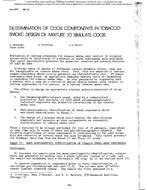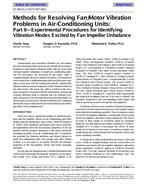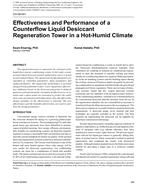This paper summarizes the results from field studies to evaluate the effectiveness of air sealing and ventilation treatments to reduce environmental tobacco smoke transfer between units in six Minnesota apartment buildings. Multiple fan air leakage tests were used to quantify the exterior and interunit air leakage. Week-long perfluorocarbon tracer measurements incorporating up to seven different gases were used to estimate infiltration and interapartment airflow rates.
Air leakage tests indicated that, before treatments, the median total leakage of all tested units was 861 cfm50, with the median for individual buildings ranging from 454 to 2368 cfm50. For four of the buildings there was almost a factor of two difference between the tightest and leakiest units in the same building. The median leakage to adjacent units was 155 cfm50 or 27% of the total leakage. The air sealing produced a median reduction in interunit leakage of 54% and 15% for two of the buildings, but it did not have a measurable effect at three of the other buildings.
Tracer gas measurements showed that the fraction of air coming from other units compared to total ventilation varied from 2% for a new four-story condominium to 12% for a three- story 12-plex. The air sealing resulted in a consistent—but small— reduction in interunit airflow, and the installation of the continuous ventilation systems resulted in a nearly three-fold increase in the number of units that met minimum ventilation requirements.
Presented at Thermal Performance of Exterior Envelopes of Whole Buildings X – December 2007
Units: Dual
Citation: Thermal Performance of Exterior Envelopes of Whole Buildings X
Product Details
- Published:
- 2008
- Number of Pages:
- 13
- File Size:
- 1 file , 3.5 MB
- Product Code(s):
- D-BldgsX81


